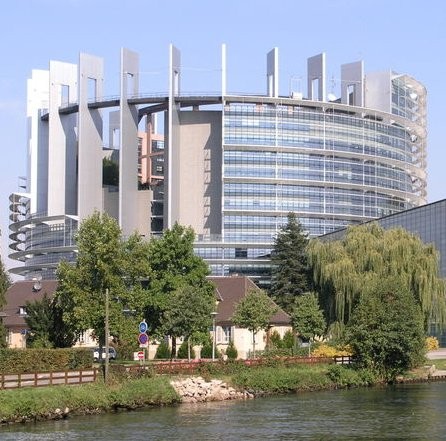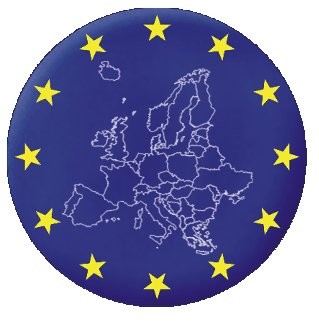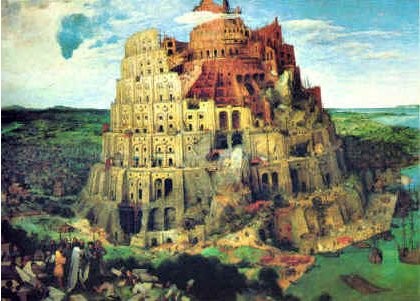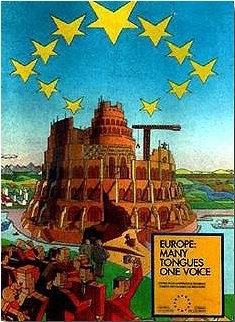The EU - the nature of the beast
The European Union can be analysed and debated from a variety of different perspectives - political, historical, cultural, economic. But it is only from a spiritual perspective that it can be truly understood.
first published 13/12/07
by Watchman
  In the aftermath of the second world war, political leaders - the prime movers being France and Germany - made the initial moves to create what is now know as the European Union. And the succession of names given to the growing alliance illustrates the progression in geographic, economic and political scope from the late 1940s until the present day. In the aftermath of the second world war, political leaders - the prime movers being France and Germany - made the initial moves to create what is now know as the European Union. And the succession of names given to the growing alliance illustrates the progression in geographic, economic and political scope from the late 1940s until the present day.
-
The European Coal and Steel Community The ECSC was formed in 1950 and this act of bringing coal and steel - as the means of production and the raw materials for the machineries of war " - under one roof" was seen as a way of preventing future European conflict. The six founders were France, Germany, Belgium, Italy, Luxembourg and the Netherlands. However the scope of the ECSC was set to expand to become -
-
The European Economic Community (EEC - or "Common Market) The Treaty of Rome was signed in 1957, and this treaty formalised both the geographic enlargement that has since progressed, but also the huge expansion of scope to cover most spheres of commerce and industry. The term EEC was very quickly replaced by -
-
The European Community (EC). By dropping the word "economic" from its title the EEC (EC) takes an authority over all areas of life. In turn the term "community" was then replaced to become -
-
The European Union (EU). Through a succession of boundary enlargements, the "Union" now includes countries from the former Soviet Union (FSU).
Successive boundary enlargements
In 1973 the European Communities were joined by Denmark, Ireland and the United Kingdom, followed by Greece in 1981, Spain and Portugal in 1986, Austria, Finland and Sweden in 1995.
In May 2004, the European Union expanded into Central and Eastern Europe. Ten new countries joined the EU: Cyprus, the Czech Republic, Estonia, Hungary, Latvia, Lithuania, Malta, Poland, Slovakia and Slovenia.
Bulgaria and Romania joined this year (2007), while Croatia and Turkey are also candidates.
So what started in the late 1940s as an alliance of 6 countries (nation/states) relating to the coal and steel industries has progressed to become something far beyond its beginnings.
(For an overview of the geographic expansion <click here>.)
The Lisbon Treaty - 13 December 2007
The treaty signed on 13 December 2007 is a replacement for the failed Constitution which was rejected by the French and the Dutch in 2005; and - amongst other things - creates the permanent post of President of the European Union and a de-facto office of EU Foreign Secretary. Most European leaders acknowledge that the main substance of the constitution will be preserved.
(For more detailed information <click here>.)

Brueghel's painting of the Tower of Babel
The Empire of Europe - Babel reborn?
 Whilst there are markedly different views on the philosophies under-pinning the formation, expansion and role of the EU, there will be very few, on both sides of the debate who will disagree with the use of the term "super-state" to describe what the EU has now become. What we are witnessing is the creation of a latter-day european empire. Whilst there are markedly different views on the philosophies under-pinning the formation, expansion and role of the EU, there will be very few, on both sides of the debate who will disagree with the use of the term "super-state" to describe what the EU has now become. What we are witnessing is the creation of a latter-day european empire.
Supporters see european integration as creating the climate for peace and prosperity. Others think differently.
Initially created in an attempt to prevent european conflict many now feel that the EU - in what it has now become - sets the scene and creates the conditions for future strife.
From a biblical perspective, many Christians - supported by the EU's determination to exclude reference to God from its failed constitution - feel that what is apparent is an end-time manifestation of the spirit of Babel.
According to the BBC the European Parliament building in Strasbourg incorporates a unique sound and lighting system which will cause the dome of the parliament chamber to light up as the volume (noise level) of discussions rises. The BBC report states: A lighting system made up of optical fibres is installed like a constellation around the dome of the amphitheatre, blinking more or less intensely according to the sound level of the parliamentary debates.

===========
Ed footnote: What do we make of all of this? Answers on a postcard; or by hitting the "Comment" button below.
|